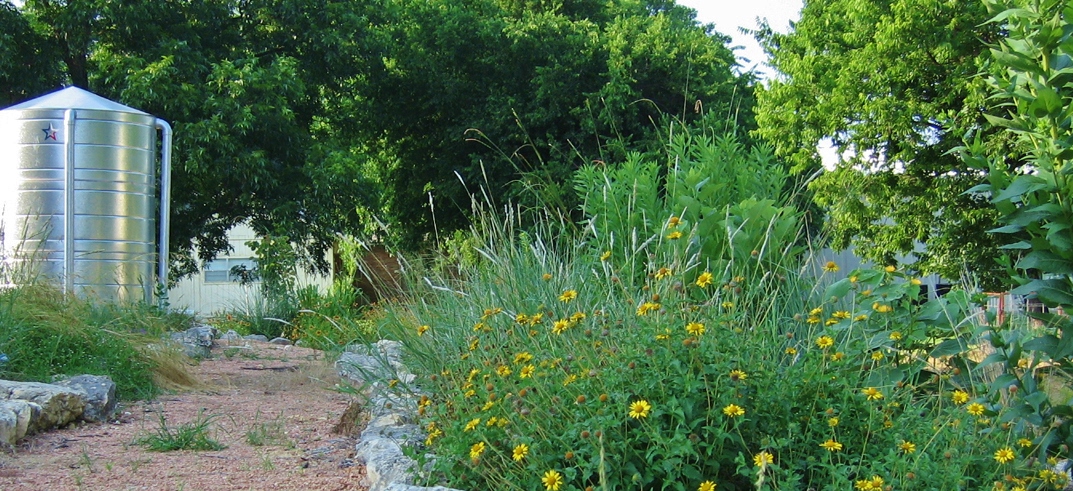Rainwater Harvesting

Rainwater Harvesting
Water is scarce in the Texas Hill Country. With our drought-and-flood climate and stressed water supply, alternatives to traditional water project development can help increase reliability, conserve resources and protect the environment. An effective, desirable and responsible alternative is rainwater harvesting.
We value rainwater for its purity and softness. Groundwater, aside from being a limited resource, can be “hard,” coating dishes, plumbing, hair and clothes with mineral residue. Often, hard water doesn’t even taste or smell good.
A properly designed and installed rainwater harvesting system can provide clear, safe water for potable and non-potable use, especially for landscaping and other outdoor needs. In addition to providing high-quality water, a rainwater system is actually highly drought tolerant. Because it collects the rain so efficiently, even a light rain can make a big contribution to your water storage! Most of the costs are up-front, covering installation, although regular maintenance is required.
Unlike groundwater pumping, rainwater harvesting does not use a lot of energy. Generally, rainwater is collected from a house’s roof and filtered into a storage container. One inch of rain drops more than 1,000 gallons of water on a 2,000-square-foot roof! You can use the Texas A&M Rainwater Calculator to estimate how much rainwater you could collect at your house.
NEW: Rainwater Harvesting Providers and Incentives Sheet
This document was created to help residents and businesses identify rainwater harvesting providers and incentives. This is a living document that may be updated over time in response to updated incentives or providers. If any providers or incentives are missing, please let us know! We would love this document to be comprehensive. You can email info@hillcountryalliance.org to request an update.
Recent Rainwater Harvesting News
‘Like liquid gold’: Central Texans turning to rainwater collection amid drought
Even though there hasn’t been a consistent amount of rain in Central Texas for the last few months, one local business said many people are turning to them for rainwater collection tanks. It is in such high demand, one farmer is on a months-long wait list to get one....
Drought-stricken property turned into thriving oasis with rainwater harvesting
Between the ongoing drought and summer heat on the way, water is in short supply and high demand. One local man has found a way to reuse water that falls on his property. "This is just innate to me. This is what I do. I rebuild habitats," said Bill Nash. Read more...
How the ongoing drought impacts the Hill Country
In 2022, San Antonio received only a third of its average annual rainfall. Kerrville received 12.38 inches, 60% below its normal average. Popular swimming holes from Jacobs Well in Wimberley to the Guadalupe River near Center Point dried up. The Pedernales, Llano...
Meet OSCAR and CLARA, the future of water management in Austin
Austin Water is unveiling an innovative blackwater system designed to set a course for the future of water management for new development in Austin. Located at the City of Austin’s Permitting and Development Center and known as OSCAR and CLARA, the project has...

